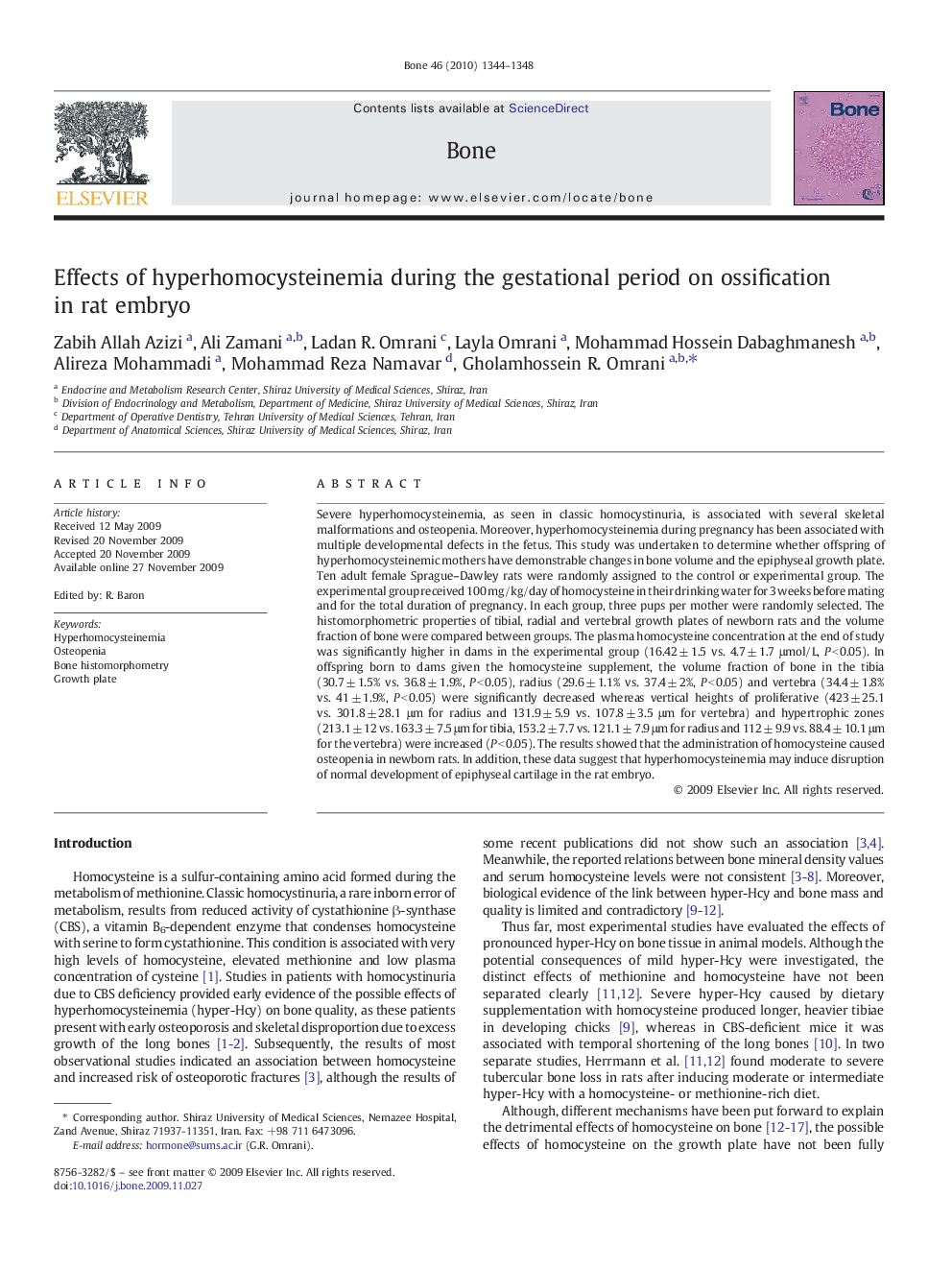| کد مقاله | کد نشریه | سال انتشار | مقاله انگلیسی | نسخه تمام متن |
|---|---|---|---|---|
| 5892245 | 1153302 | 2010 | 5 صفحه PDF | دانلود رایگان |

Severe hyperhomocysteinemia, as seen in classic homocystinuria, is associated with several skeletal malformations and osteopenia. Moreover, hyperhomocysteinemia during pregnancy has been associated with multiple developmental defects in the fetus. This study was undertaken to determine whether offspring of hyperhomocysteinemic mothers have demonstrable changes in bone volume and the epiphyseal growth plate.Ten adult female Sprague-Dawley rats were randomly assigned to the control or experimental group. The experimental group received 100 mg/kg/day of homocysteine in their drinking water for 3 weeks before mating and for the total duration of pregnancy. In each group, three pups per mother were randomly selected. The histomorphometric properties of tibial, radial and vertebral growth plates of newborn rats and the volume fraction of bone were compared between groups. The plasma homocysteine concentration at the end of study was significantly higher in dams in the experimental group (16.42 ± 1.5 vs. 4.7 ± 1.7 μmol/L, P < 0.05). In offspring born to dams given the homocysteine supplement, the volume fraction of bone in the tibia (30.7 ± 1.5% vs. 36.8 ± 1.9%, P < 0.05), radius (29.6 ± 1.1% vs. 37.4 ± 2%, P < 0.05) and vertebra (34.4 ± 1.8% vs. 41 ± 1.9%, P < 0.05) were significantly decreased whereas vertical heights of proliferative (423 ± 25.1 vs. 301.8 ± 28.1 μm for radius and 131.9 ± 5.9 vs. 107.8 ± 3.5 μm for vertebra) and hypertrophic zones (213.1 ± 12 vs. 163.3 ± 7.5 μm for tibia, 153.2 ± 7.7 vs. 121.1 ± 7.9 μm for radius and 112 ± 9.9 vs. 88.4 ± 10.1 μm for the vertebra) were increased (P < 0.05). The results showed that the administration of homocysteine caused osteopenia in newborn rats. In addition, these data suggest that hyperhomocysteinemia may induce disruption of normal development of epiphyseal cartilage in the rat embryo.
Journal: Bone - Volume 46, Issue 5, May 2010, Pages 1344-1348